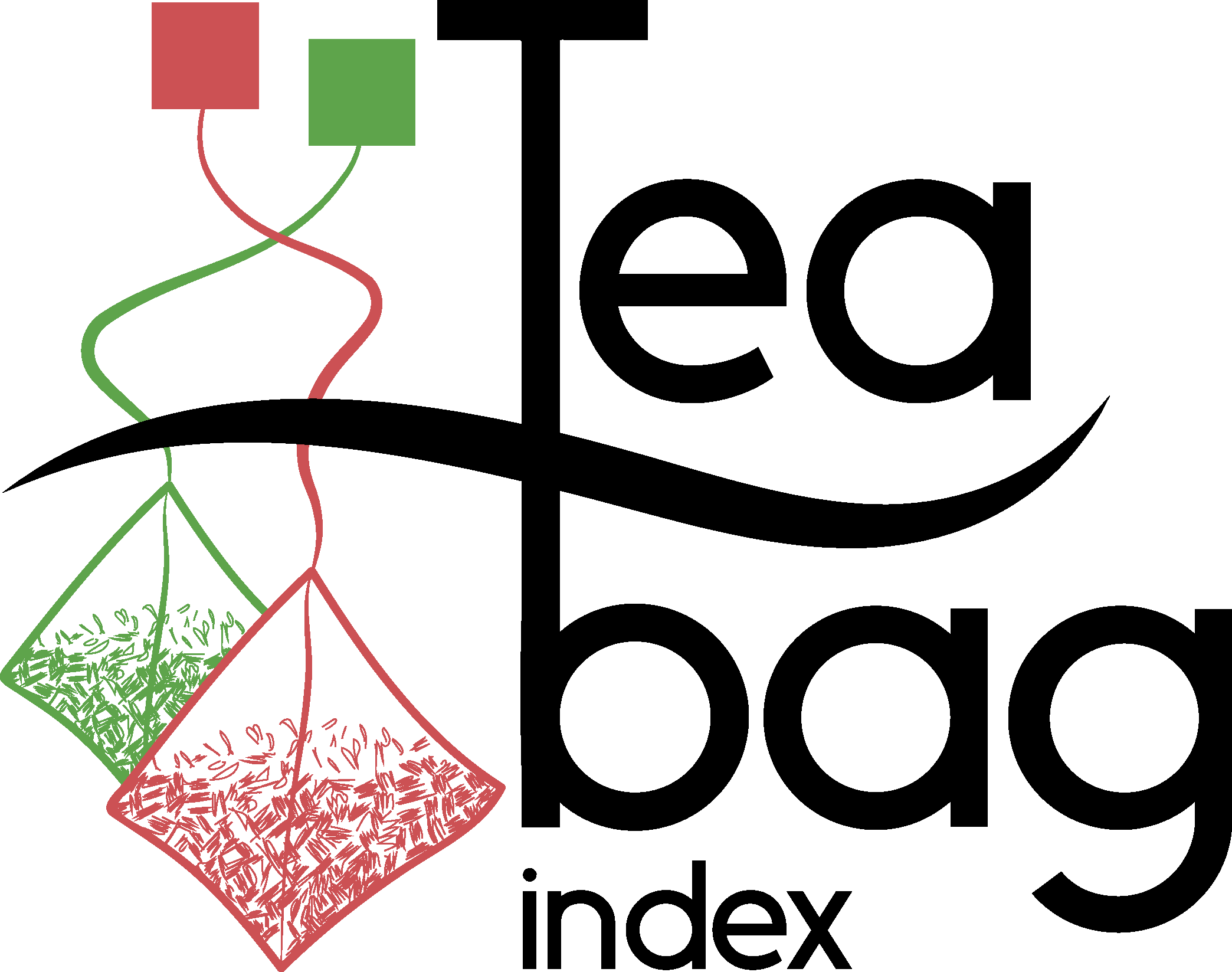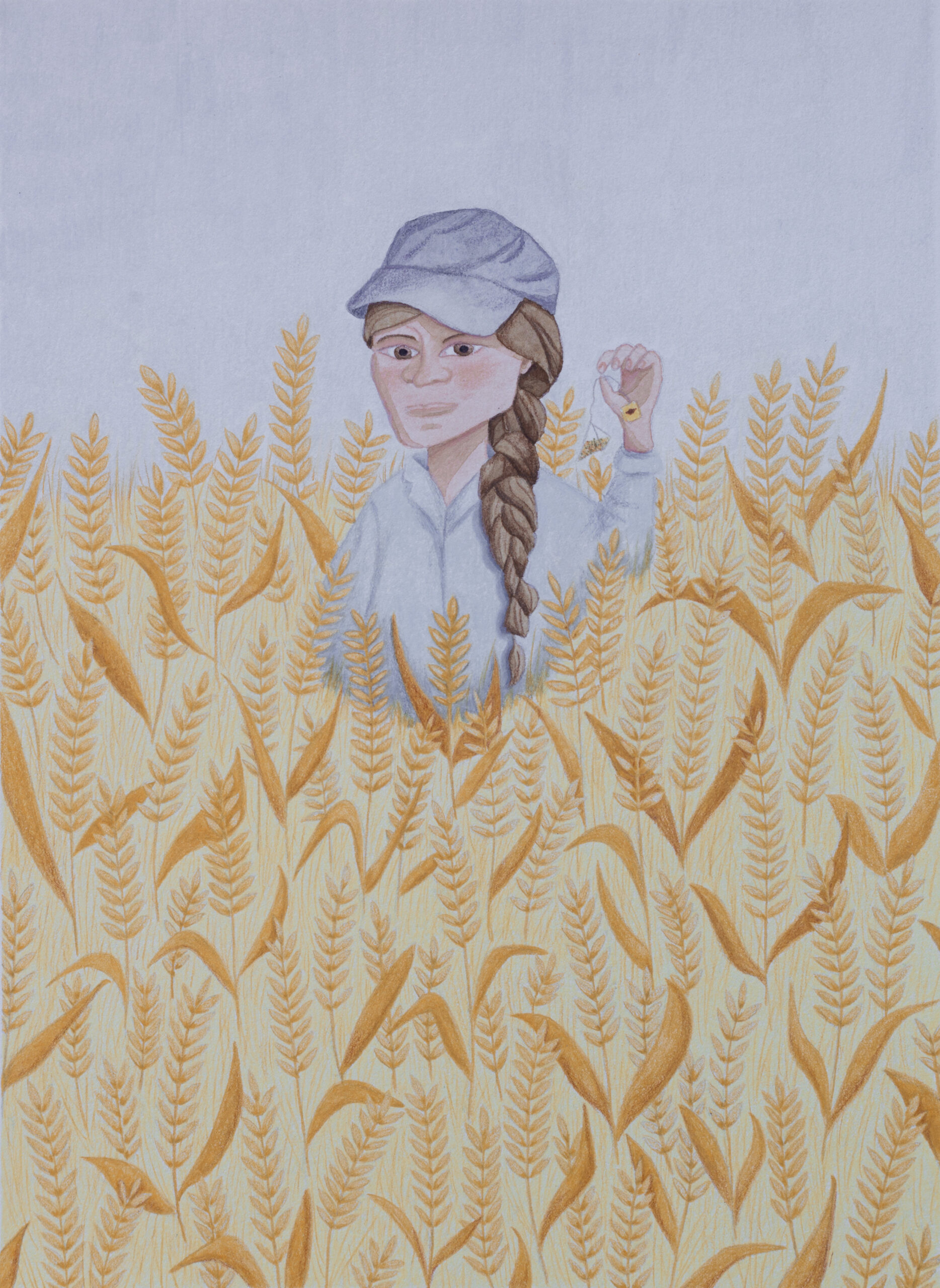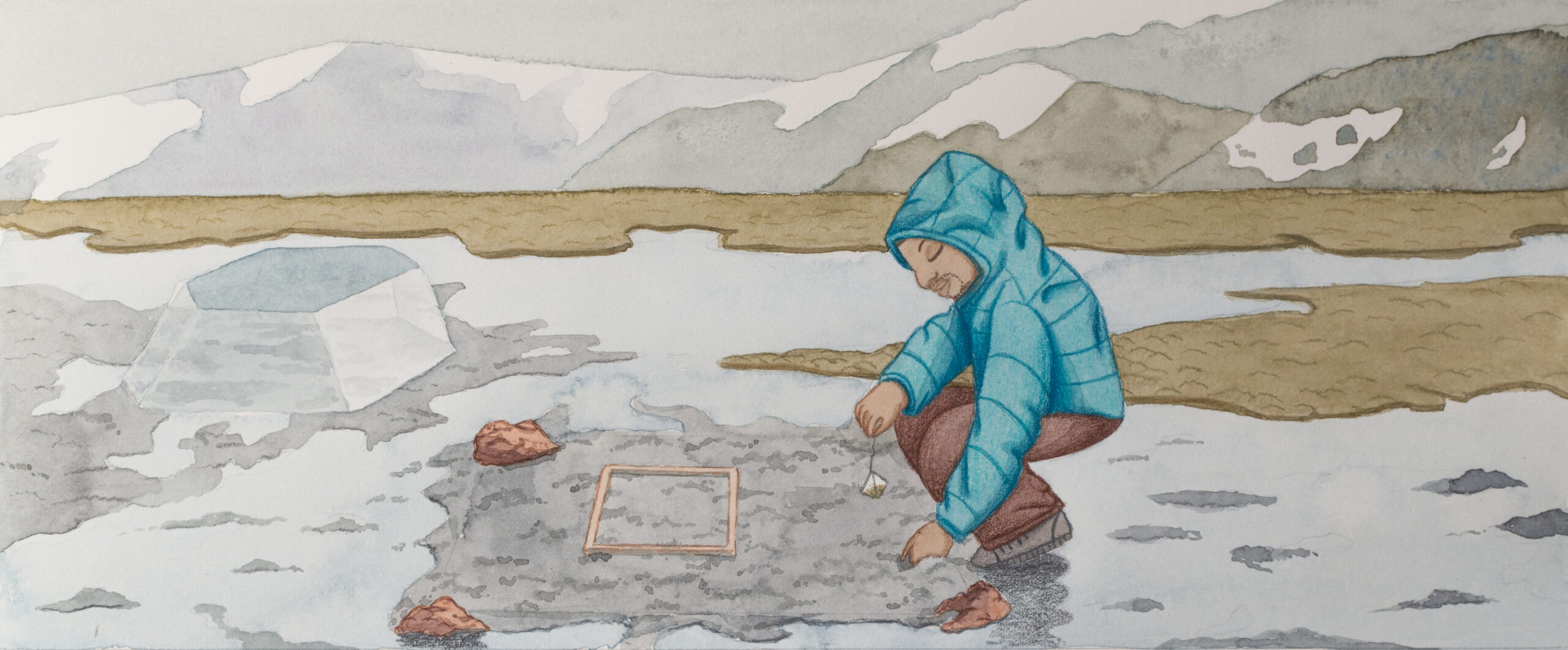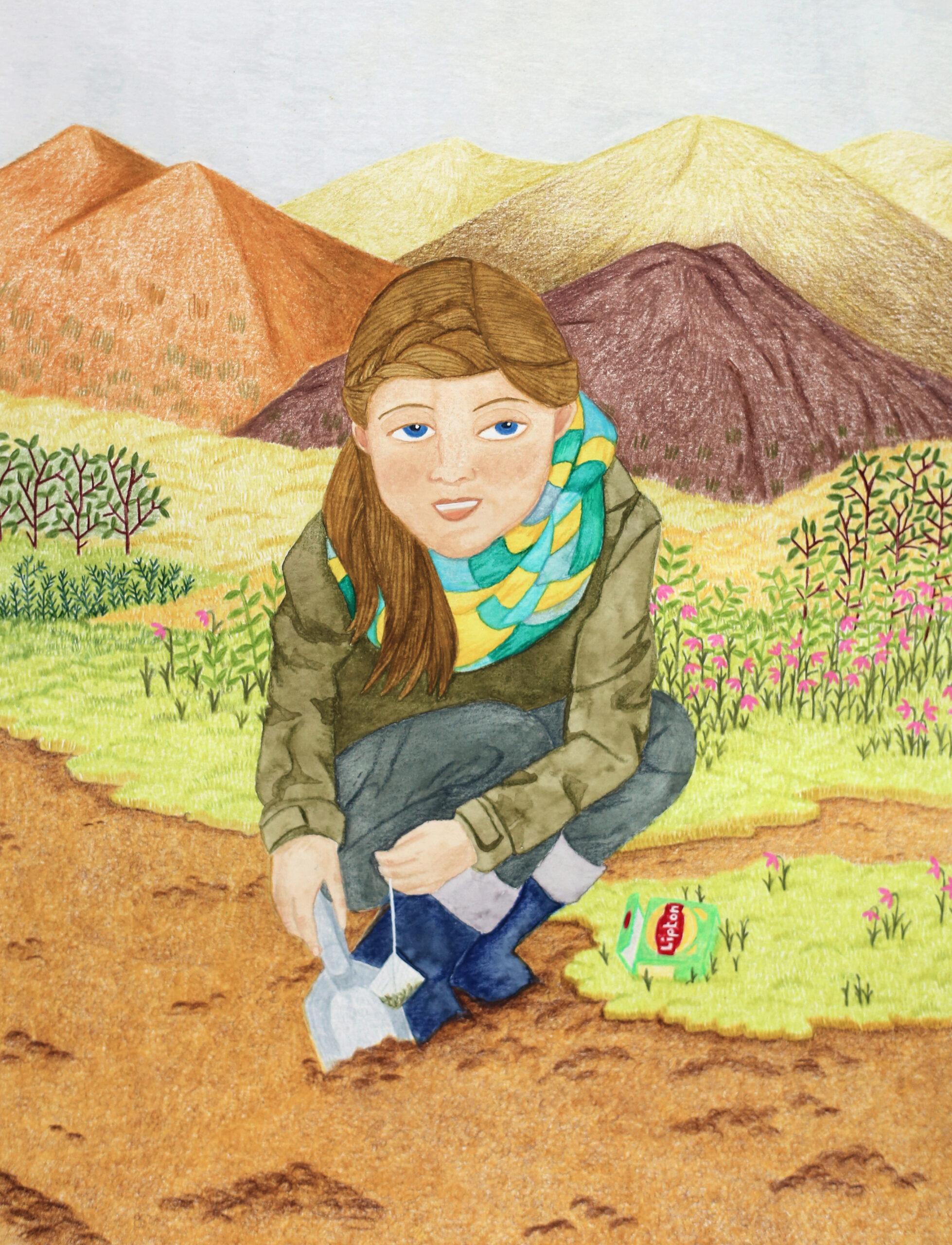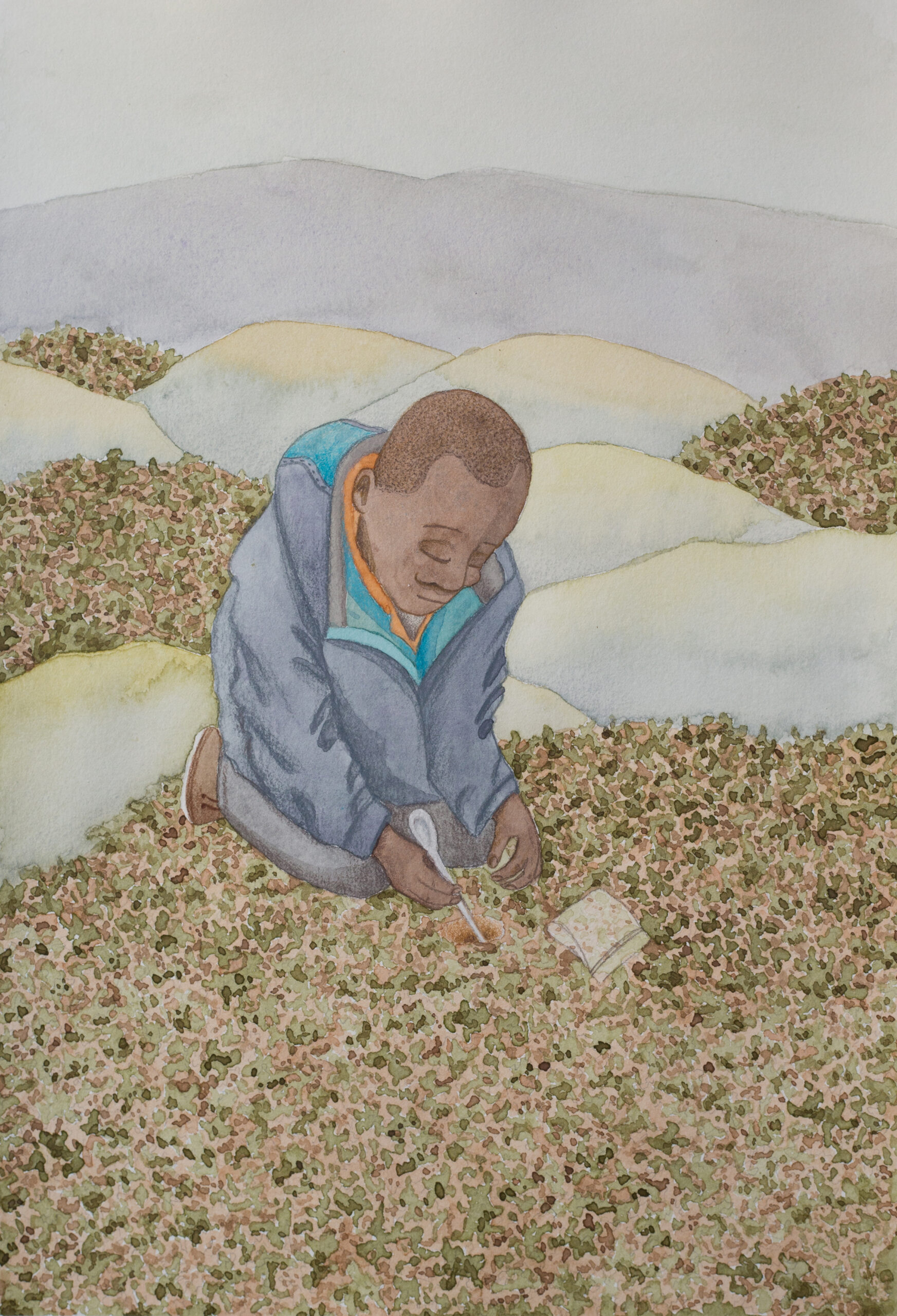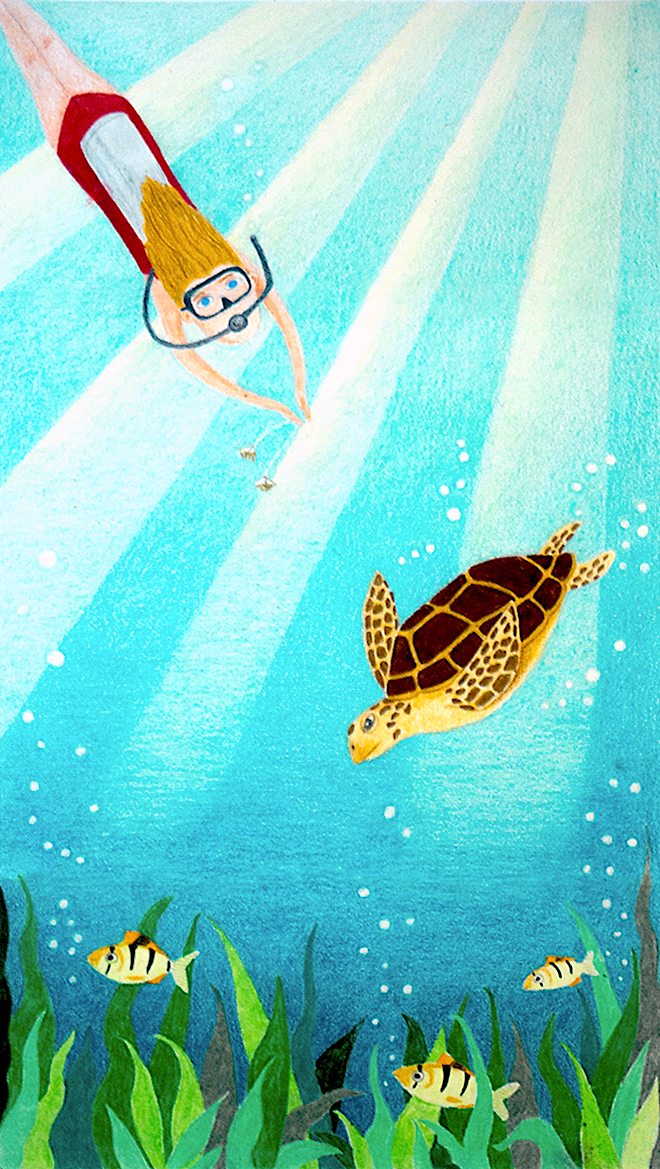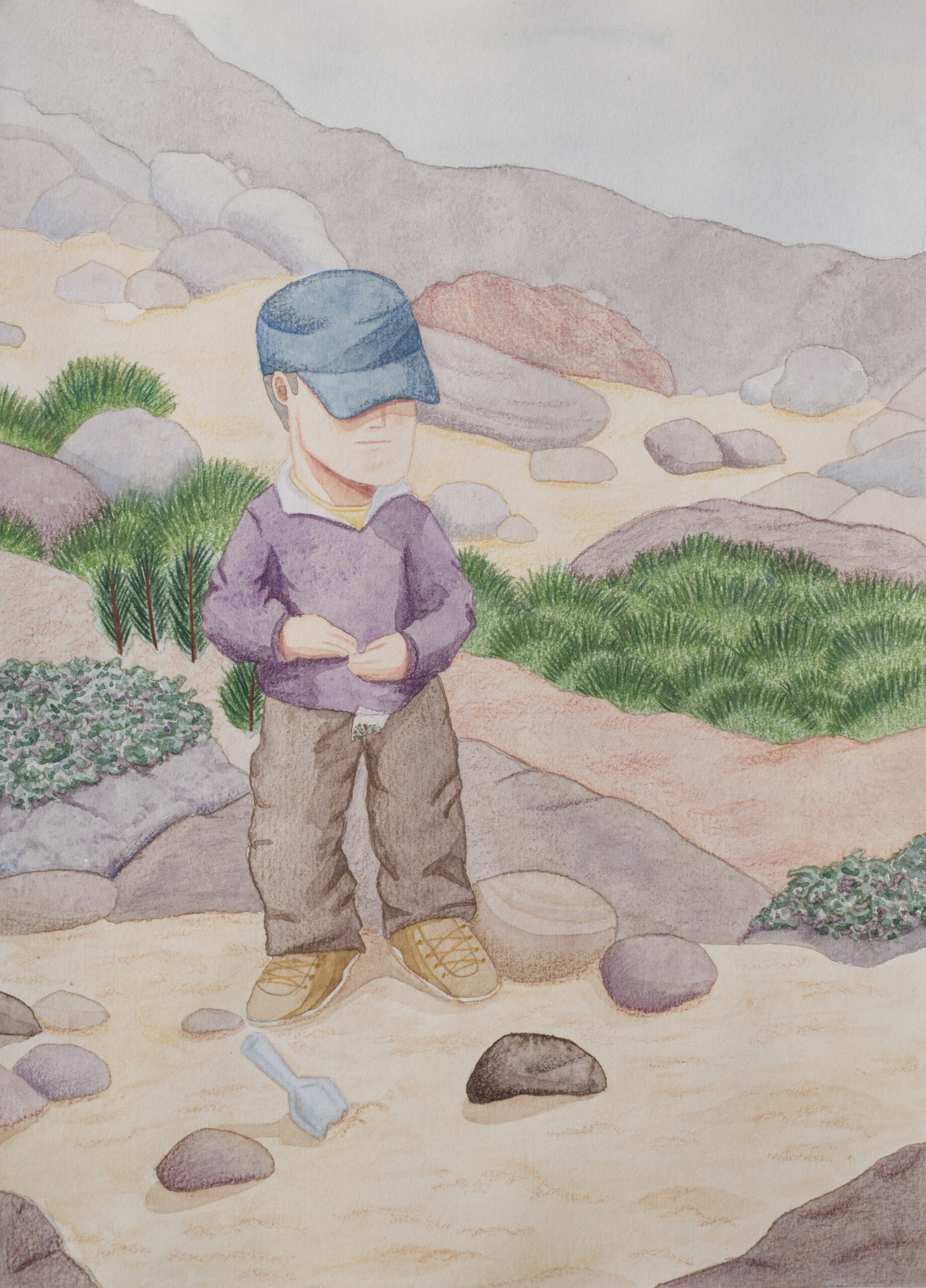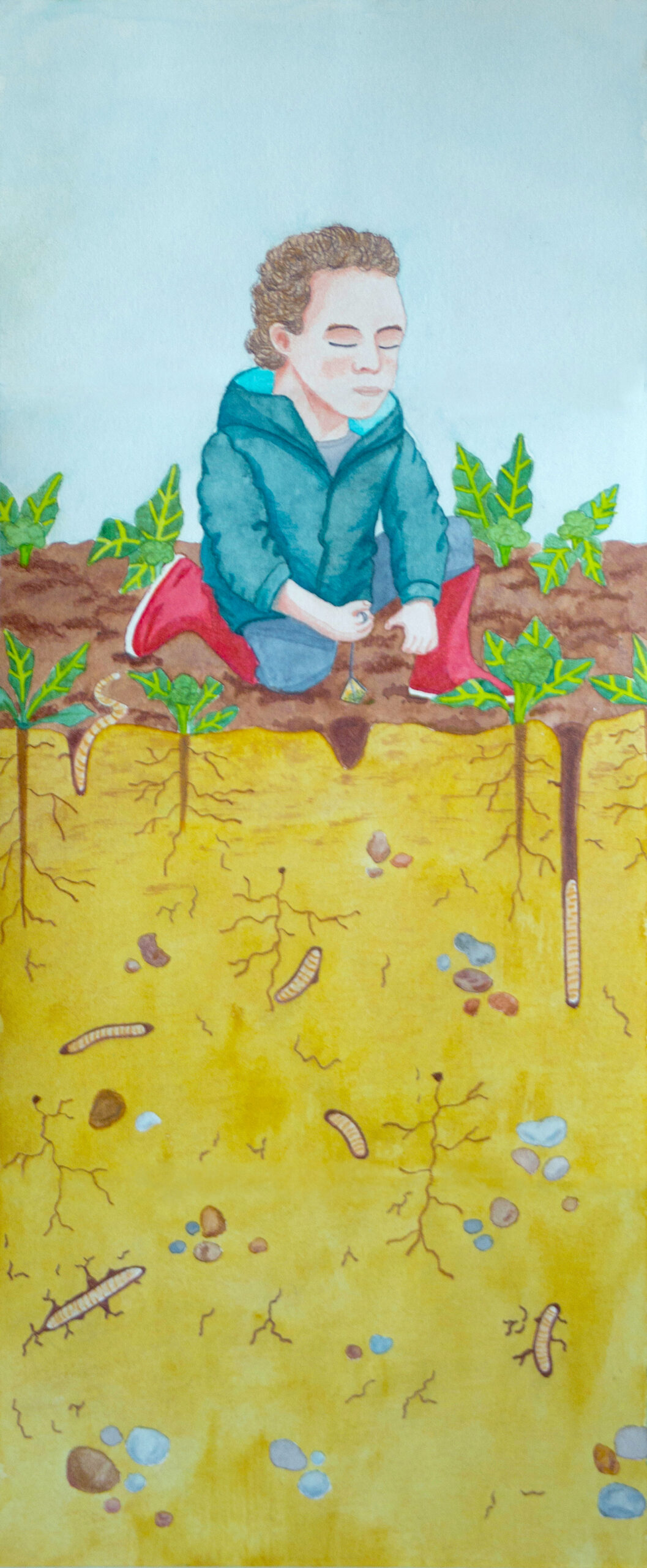Tea Tales from around the world
Illustrations: Carolina Olid
(Instagram: @carolina_olid, #fieldworkscolours)
Antonia and Taru Sandén and their team are super happy that they found back a tea bag that was not eaten by mice In the middle of a big agricultural field. They seemed to be especially fond of rooibos tea. Agriculture has a large effect on soil health, and in general, agriculture favours micro-organisms (bacteria and fungi) over other soil organisms (like worms or insects etc). It appeared that specific soil micro-organisms liked the green tea better, whereas other soil micro-organisms were more fond of the rooibos tea.
Gideon Asamoah is a researcher at the CSIR-Soil Research Institute, and he found his teabags completely flooded in the warming experiment that he participated in as a student. In this experiment, they placed small open top greenhouses of the soil that would create a local warming of the soil and plants. Together with data from 112 similar studies, we found out that a warming of 5.2C or more will stimulate decomposition, which is really important for understanding how soils will respond to global warming.
Judith Sarneel is digging into a permafrost soil to bury one of her tea bags in Abisko, Northern Sweden. She is one of the developers of the Tea Bag Index, a simple, quick and inexpensive way to determine decomposition rates in the field. This method engaged thousands of people and we estimate that 50,000 tea bags have been buried since 2013. With this method she analysed how decomposition works on different places on earth, and the results of that you can find on this website.
Isaac Olupot has used the tea bag index to measure decomposition rates in Icelandic grazing lands. He used this method in several experimental plots affected by grazing and also with different habitats during a course on ecosystem restoration. The tea bags were buried for a whole year! After this time, he weighed again the bags and evaluated the effect of grazing exclusion, habitats and sites on the tea mass loss. All these results provide key information about the health of the land in order to better develop strategies for sustainable ecosystem management.
Fee Smulders buried tea underwater to study how sea turles and their grazing affect carbon sinks in seagrass vegetation. Seagrasses around the world support large herbivores such as sea turtles and dugongs. She and her co-workers found that seagrasses can determine how much carbon can be stored in the ocean floor, and hence that overgrazing is a risk for underwater soil health.
In 2015, around 250 school classes buried tea all across Sweden and thereby made an important contribution to the global database that you can find on this website. When they were done with their experiment, each class made a picture of their shoes around the tea bag. The engagement of the Swedish students was followed by schools across europe, gardeners in United Kingdom, science clubs in Canada and many more places. Do you have a nice spot where you think you could bury a tea bag? Join the club and post your shoes on social media!
Up at Teide, that big volcano in Tenerife, there is a guy that we call Juan, who's always up for an adventure. One day, Juan gets this wild idea to bury a tea bag up there, just to see what happens in that extreme environment. Vulcanoes offer a challenging environment for soil microorganisms to do their job. Despite that it is nice and warm, vulcanic soils contain many substances (like sulfur, metals) that make the soils not so active, despite that the volcano is.
During covid, Adriano Sofo studied how earthworms can improve soils and the growth and development of plant species. He found that earthworms stimulate decomposition. Adriano Sofo is Associate Professor of Agricultural Chemistry and Plant Biology at the University of Basilicata, Italy. His scientific interests include understanding how plants respond to different stresses such as pollutants, global warming or the presence of earthworms.
More TBI-stories (blogs)
-
- Marjolijn with tea bags in Bonaire (in Dutch)
- Simon Tresch explaining urban gardening
- The shrub hub guys and their tea activities in the arctic
- Sarah Duddigan explains how she joined forces with UK gardeners to test decay across Great Britain
- How tea bags were planted in Australia
- About the involvement of Swedish school kids in 2015
- Susanna Venn and her tea bags in the Alps
- Tea buried in salt marshes across the globe.
- The NetLake project submerging tea in lakes.
- Maarten van Loonen sheltering tea from grazing in the arctic
- Dutch schools planting tea
- Farmers using tea
- Andreas Fliesbach runs a project with farmers in Switzerland
- Slovakian schools participate in teatime4ALTERNET (in slovakian)
- Slovakian schools participate in teatime4ALTERNET (in english)
- Johnathan van Oppen and his research with tea bags
- Article on TBI in Bioscience
- Blog explaining TBI – Next generation ecologists
- Blog explaining TBI – PLOS
- Blog explaining TBI – General concept, Global Soil Biodiversity Initiative
- Blog over TBI – Kennislink
